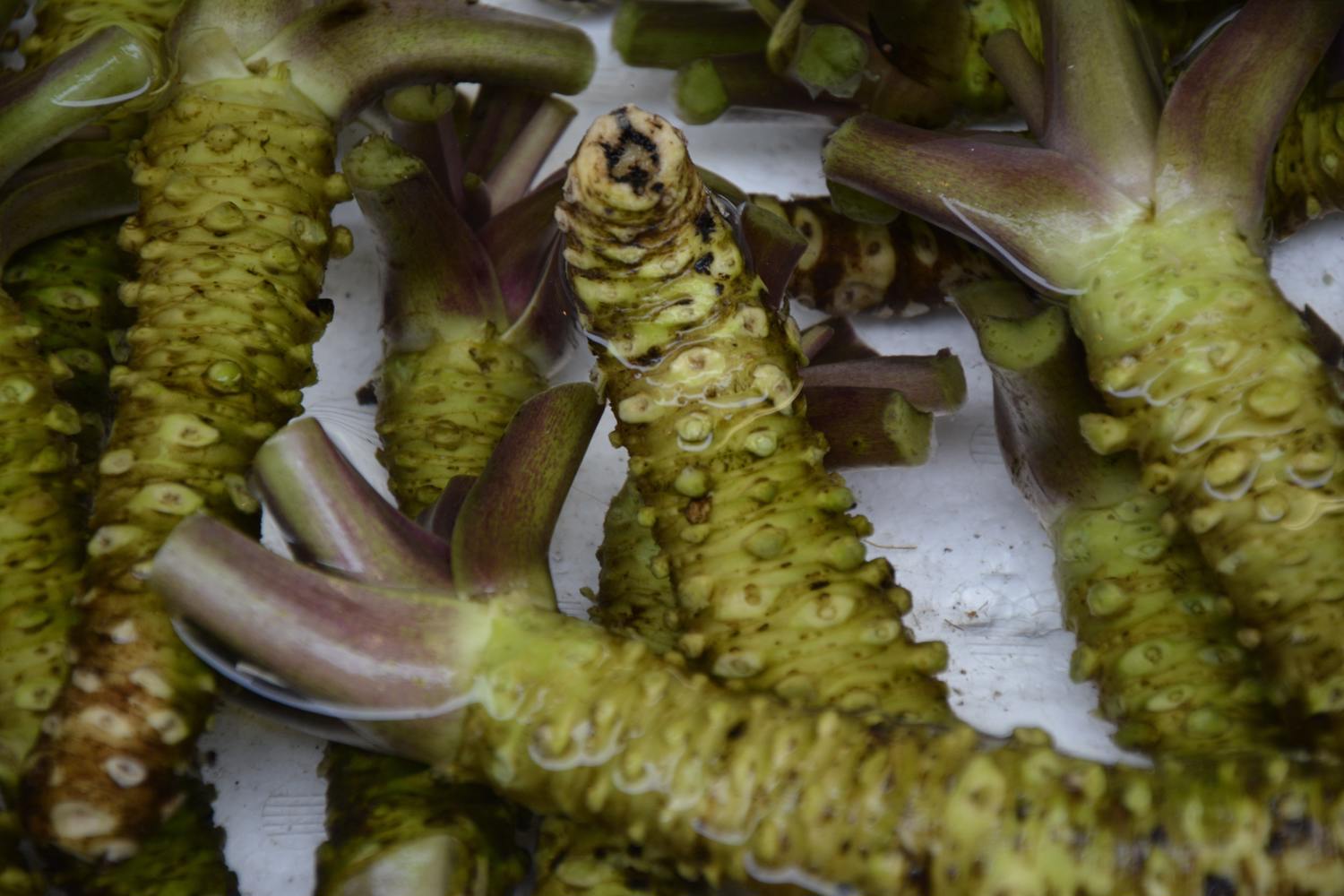What in the world is Wasabi?
If you've been to a sushi restaurant, you've probably had wasabi. Well, that's what you may have thought ... but the truth is, you likely weren't eating real wasabi. This may come as a shock to some, but it's true. Let's take a deeper look at what in the world is going on with wasabi!
What Are We Eating?
So let's start by addressing the "wasabi" we're all used to. What are we eating? The truth is, wasabi found in most restaurants is most often simply horseradish and mustard powder that has been dyed green. I remember once hearing this fact on one of those food channels, and ever since then, I can't stop bringing it up when encountering wasabi. This isn't just in the United States. While it's estimated that 99% of wasabi found here is fake, experts believe that about 95% of wasabi found in Japan is also not the real deal.
Where Does Real Wasabi Come From?
So if we've just been eating horseradish this whole time, what is "real" wasabi? Well, real wasabi comes from grating the stem of the Wasabia japonica, a perennial native to Japan. It even looks pretty similar to a horseradish root, aside from the green color. If you hadn't guessed, the two taste pretty similar as well, hence the substitution. This is because wasabi is a member of the same Brassica family as horseradish and mustard.
This plant has its origins in Japan, along the cold mountain streams and rocky river beds. The plant may have even been used for medical reasons, as its earliest reference was in Honzo Waymo, an 18-volume medical dictionary, in 918 AD. It was during the 1800s, or the Edo period, that wasabi became a popular seasoning for sushi.
Wasabi Is Difficult to Grow
So there must be some reason the real thing is so rare these days. One explanation could be that it is not easy, or cheap, to grow. Wasabi seeds can cost a dollar each, and they don't often even develop. The environmental conditions are very important in order for wasabi to grow. The plant should not be exposed to too much humidity or the wrong nutrients. It also needs to have adequate water. If these conditions are not met, the plant will not prosper.
If the plants are able to germinate, there are still concerns. For example, fungal disease and stem rot are common for plants growing in wet conditions. Beyond that, it can at times take 3 years for the plant to fully mature! That's right, 3 years. So you can see why it's super uncommon.
Taste the Difference
While the horseradish and mustard paste combination provides a similar taste to real wasabi, if you've had the real thing, you should be able to tell the difference. In fact, real wasabi is actually not as spicy as what we normally eat. It's said to have a more plant-like, herbaceous flavor, that has even been described as pickle-like in scent. I can't say I'm a huge wasabi fan normally, but that description has me dying to try the authentic stuff. Actual wasabi is said to be more complex and less intense, which sounds superior in my opinion.
Wasabi, Horseradish, and Food Poisoning
Other than appearance and taste, both real and imitation wasabi have some other things in common. One of these is their supposed ability to prevent food poisoning. Both plants contain a compound that could potentially aid in avoiding food poisoning, which points to their initial use. During the Edo era, historians believe wasabi was used to neutralize the fishy smell of food. It is said to have grown in popularity due to their belief in wasabi's power to stop bacteria growth.
A compound called allylisothiocyanate, which occurs while grating horseradish or wasabi, works to slow the growth of food poisoning bacteria and fungus. While it is not a cure, it can be helpful on some level.
So there you have it. Most of the time we're eating wasabi, it's actually horseradish. But we can see why it is so rare to find wasabi from a true wasabi plant. High prices and the difficulty of growing the plant make it quite the task. The good news is, the stuff we have been eating is pretty similar, or about as similar as it can get.
